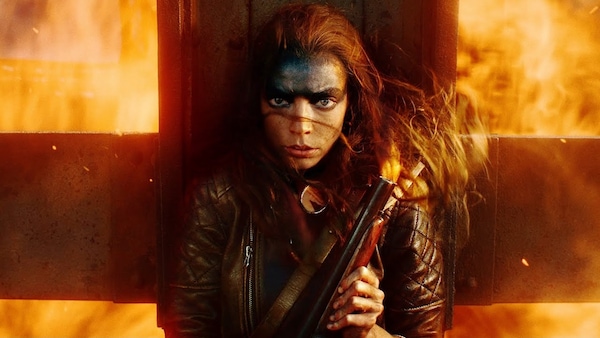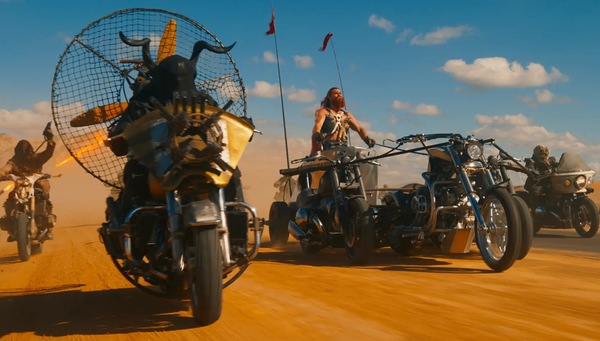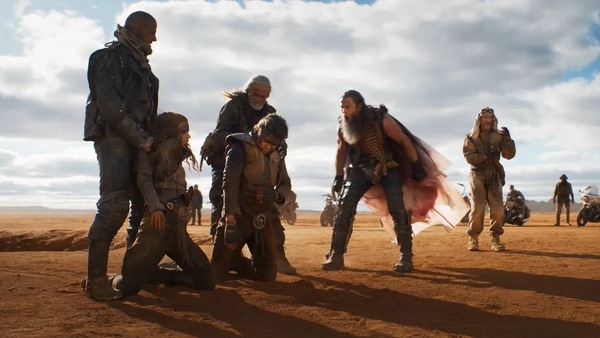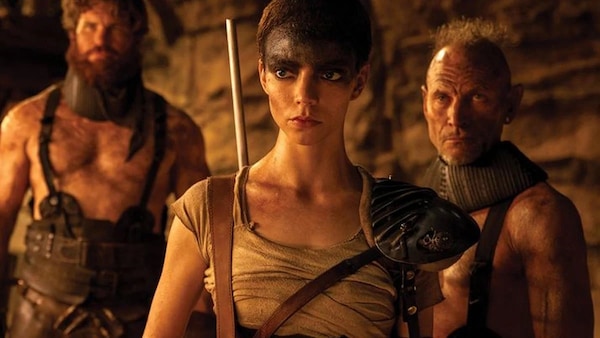Furiosa: A Mad Max Saga | George Miller Returns As The Maestro Of Mayhem
The real hero of Furiosa is the mind of 79-year-old director George Miller.

Last Updated: 05.25 PM, May 23, 2024
This column was originally published as part of our newsletter The Daily Show on May 23, 2024. Subscribe here. (We're awesome about not spamming your inbox!)
***
WATCHING Furiosa: A Mad Max Saga after Mad Max: Fury Road, the greatest action film ever made, is the sensory equivalent of watching Batman Begins after The Dark Knight, the greatest superhero movie of all time. As a viewer, the ‘nonlinearity’ of the franchise allows you to feel both movies at once. You see the flesh behind the blood spilled in Fury Road. You see why Charlize Theron’s Imperator Furiosa looked at road warrior Max a certain way. You see why her skepticism melted into something warmer and colder. You see why her shaved head and black face-paint is less of a ‘look’ and more of a broken-hearted souvenir. You see why she powered through the wasteland like it was a (severed) muscle memory. You see why she drove the battle-hardened war rig a particular way. And you also see why our hindsight is actually director George Miller’s foresight.
Fury Road hit the ground running so hard that it upended the entire relationship between a film and its audience. You didn’t care about the why(s) — the dystopian planet and its oddities already existed. It was like boarding a burning train that’s speeding towards a crumbling cliff; there was no time to ask questions. The anti-joyride was the point. Furiosa puts the world back in world-building, not only transcending its own identity as a Fury Road character’s memory, but also unfolding as if the future — Max’s story, the stowaway escape of the wives, the death of Immortan Joe, the reclaiming of the Citadel — was always Furiosa’s destiny. Suddenly, the audacity of the spectacle feels like more of a consequence. Miller’s wild imagination feels like more of a destination. The wanton violence feels more plausible — and therefore more shocking. It’s a rewarding experience because it’s the cinematic manifestation of a trauma dream. It’s the prequel you didn’t know you needed.

It’s not just that Furiosa is a backstory — that is, the reasoning behind the glorious randomness of Fury Road. It’s also that the reasoning feels like a younger version of that randomness. Furiosa covers years of a life (as opposed to the few days of Fury Road), but even the passage of time is treated as a non-stop chase sequence. It doesn’t feel disorienting because this Furiosa is chasing a lost childhood. Time is the one thing she can’t control, and at some level, she’s worried that it’s widening the gap between where she comes from and who she is. (For context, you can barely tell when the actress changes from a pre-teen Alyla Browne to the 28-year-old Anya Taylor-Joy). So the film-making — where chapter-wise transitions are fused by a continuously pulsating soundtrack — reflects Furiosa’s desire to preserve time; if she behaves like it hasn’t passed, maybe it won’t. The film opens with an 11-year-old Furiosa being abducted from near her homeland, the Green Place of Many Mothers, by the biker horde of a mutant warlord named Dementus. Her warrior mother, Mary, who tries to rescue her, is soon burnt on a crucifix-type structure.
Furiosa spends the next decade torn between a love-fuelled return and hate-fuelled revenge. Interestingly, her journey is rarely made to feel like hers. A war between Immortan Joe and Dementus breaks out for the leadership of the three-fortress (Gastown, Bullet Farm and the Citadel) Wasteland. Furiosa initially uses her invisibility — first as a ‘daughter’ of Dementus, then as a mute war boy for Joe — to her advantage. She works her way towards an escape, somewhat hoping that she can hide behind the pages of history being written by two power-hungry men. You’d think a heroine like her would pit the two villains against each other, but the rules of literature no longer apply in the Mad Max universe.

Once her path crosses with empathetic military commander Jack (Tom Burke), Furiosa finds herself owning her journey and rewriting those history books. She sheds her invisibility, slowly reclaiming her narrative from the throes of feral masculinity. Her personal quest becomes a public reckoning, the kind of lore that blurs the lines between truth and mythology. The biblical connotations aren’t there for the heck of it — it’s almost Miller’s way of saying that Furiosa’s story would perhaps be the closest to a holy testament in a post-apocalyptic planet. Only, she doesn’t care how it’ll be interpreted.

Anya Taylor-Joy appears an hour into the 148-minute film, once Furiosa is old enough to have plotted an escape. But there’s something about how consumed she manages to look. She’s mentioned in interviews that this role has been her darkest acting experience, without really going into the details. It’s clear, though, that her embodiment of Furiosa doesn’t stop at the stunts. Even in a jaw-dropping set piece featuring the war rig getting attacked by two separate gangs, it’s hard to look past her eyes. She bears no resemblance to the older Furiosa from Fury Road, but that’s also because her evolution is a lesser form of mutation — her premature adulthood leaves her with no blueprint to grow. In contrast, Chris Hemsworth, better known as hunky Marvel god Thor, has the more crowd-pleasing (and nose-extending) role as Dementus. He’s part Johnny Depp’s Jack Sparrow and part Heath Ledger’s Joker — a mix of performative levity and psychological warfare. The climax in fact plays out like the Batman-Joker face-offs in The Dark Knight, where the villain’s chilling self-awareness mocks the haunted hero’s moral conflict. He does a lot of talking for a movie that measures every spoken word.

The real hero of Furiosa, of course, is the 79-year-old mind of director George Miller. A chariot composed of three motorcycles? A flying parachute car with snipers? A mangled living body tree with peaches? A diet of lizard mash and human blood sausages? There’s an addictive musicality to the action in this movie franchise — it’s like the visual incarnation of a funky earworm on loop, where the commitment to weirdness offsets the sheer artfulness of it. The only rule — constant motion at any cost — pronounces the rare silences. It’s also about designing a universe where fear is no longer a hindrance to violence. Bodies get crushed and sliced by machines, accents morph into glorified grunts, names mock the vagaries of language, and death becomes a biological parody of living. It is all worryingly satisfying to watch, because it is in essence a gory reset of Darwinism itself. Pain is as extinct as humanity because humans themselves have devolved into mangled primates. There is no real science to their bloodshed, no physics to their assaults, because there is no mind left to understand those concepts. What looks like innovation is actually an expression of its obsolescence. In other words, the madness is not a gimmick; it’s very much a lived-in and died-in part of this system.

It’s why Miller’s Mad Max series makes for the perfect companion piece to the current Planet of the Apes reboot. These superbly imagined action epics are about animals who’re looking to puncture the cycle of evolution. They’re also about humans who are struggling to break the cycle of their follies. In a way, one dystopian planet is merely a descendent of the other. A film like Furiosa is special because it is rooted in the unseen — and frankly, inconceivable — period between one end and the next beginning. It’s the seemingly awkward pause between two civilisations, the barren land between a rock and a hard place. George Miller has carved his bloody symbol into the skin of this Great Unknown. And, to paraphrase an inglorious basterd, Furiosa might just be his masterpiece.
